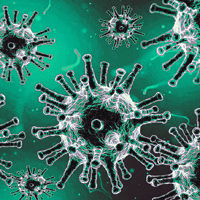The side effects of the COVID-19 pandemic on key public health elements - How the global emergency has changed the acute management of myocardial infarction and stroke, the network of cancer care, and assistance to frail individuals

All claims expressed in this article are solely those of the authors and do not necessarily represent those of their affiliated organizations, or those of the publisher, the editors and the reviewers. Any product that may be evaluated in this article or claim that may be made by its manufacturer is not guaranteed or endorsed by the publisher.
Authors
The coronavirus disease 2019 (COVID-19) pandemic is a primary health problem globally. In particular, it has caused troubles even to the advanced health systems of Western countrieswho attempted to limit the spread of the infection and manage patients with severe respiratory distress. However, this sudden contingency has had a much higher cost if we also consider the cost of suspending ordinary clinical care or delays in the emergency pathways of non-COVID-19 patients. Furthermore, the policies applied to contain the contagion have exacerbated the socio-economic disparities of the population and isolated fragile patients, making them subject to clinical relapses or aggravation of chronic diseases. For this reason, the various specialist centers have equipped themselves to guarantee an effective therapeutic path. In this brief review, we have outlined some consequent repercussions on the management of acute and chronic cardiovascular and neurovascular diseases and on oncological treatment. In particular, we have described the effects of the current health reorganization on some acute and time-dependent diseases, such as stroke and acute coronary syndromes, in which therapeutic delay is potentially disabling or fatal. Furthermore, we have focused on cancer treatments, whose essential cornerstones are early screening and follow-up. Finally, the suffering of the local health network has led to a lack of continuity of care in fragile patients, such as psychiatric, marginalized, or multiple comorbid patients.
How to Cite

This work is licensed under a Creative Commons Attribution-NonCommercial 4.0 International License.
PAGEPress has chosen to apply the Creative Commons Attribution NonCommercial 4.0 International License (CC BY-NC 4.0) to all manuscripts to be published.






